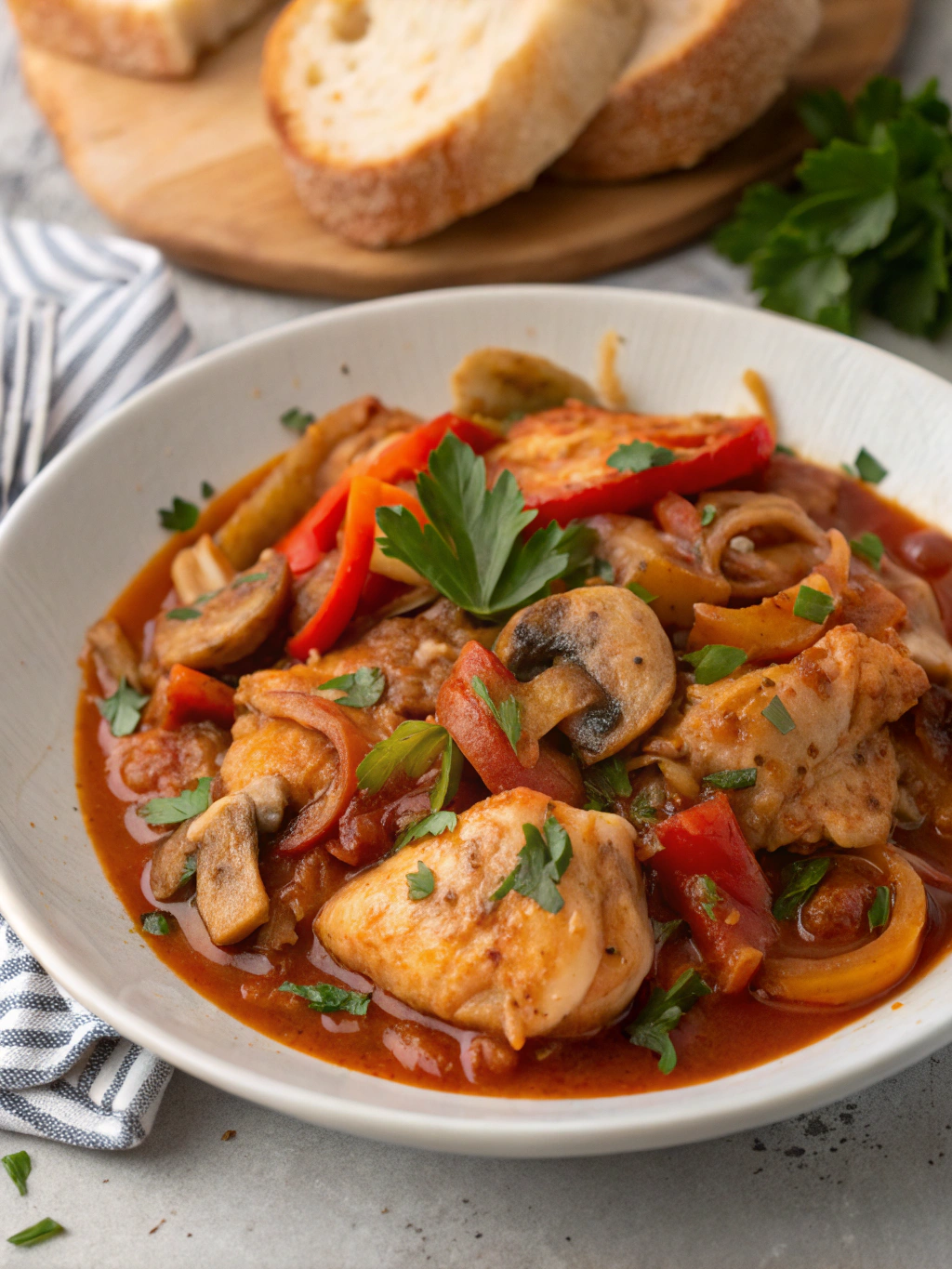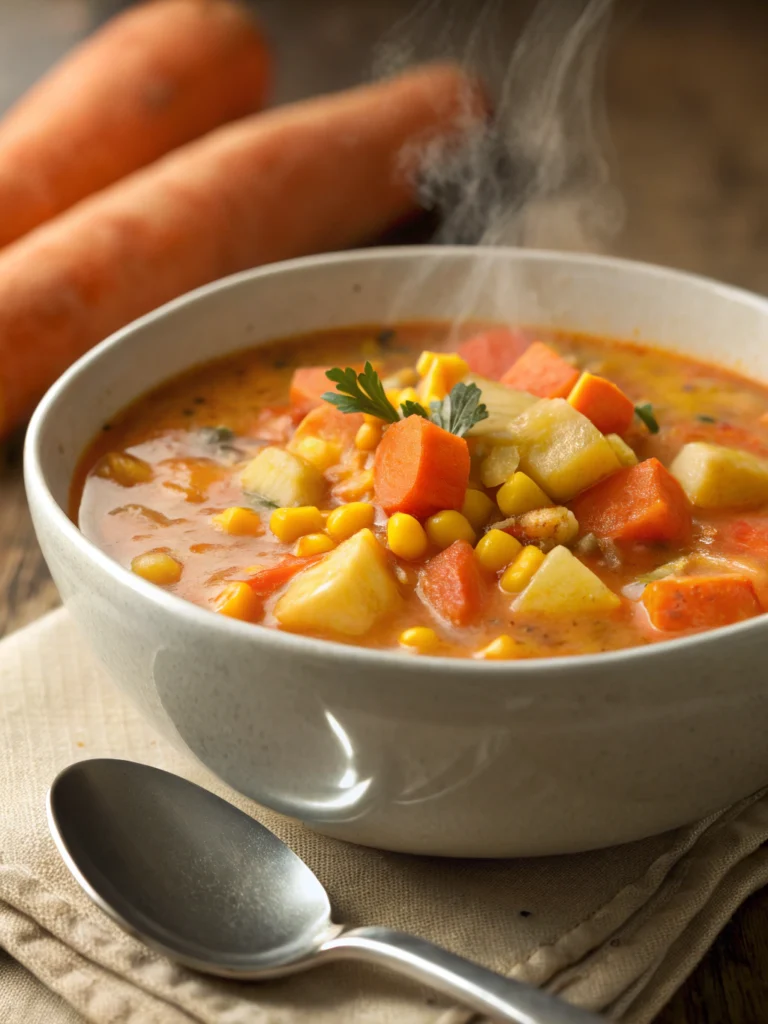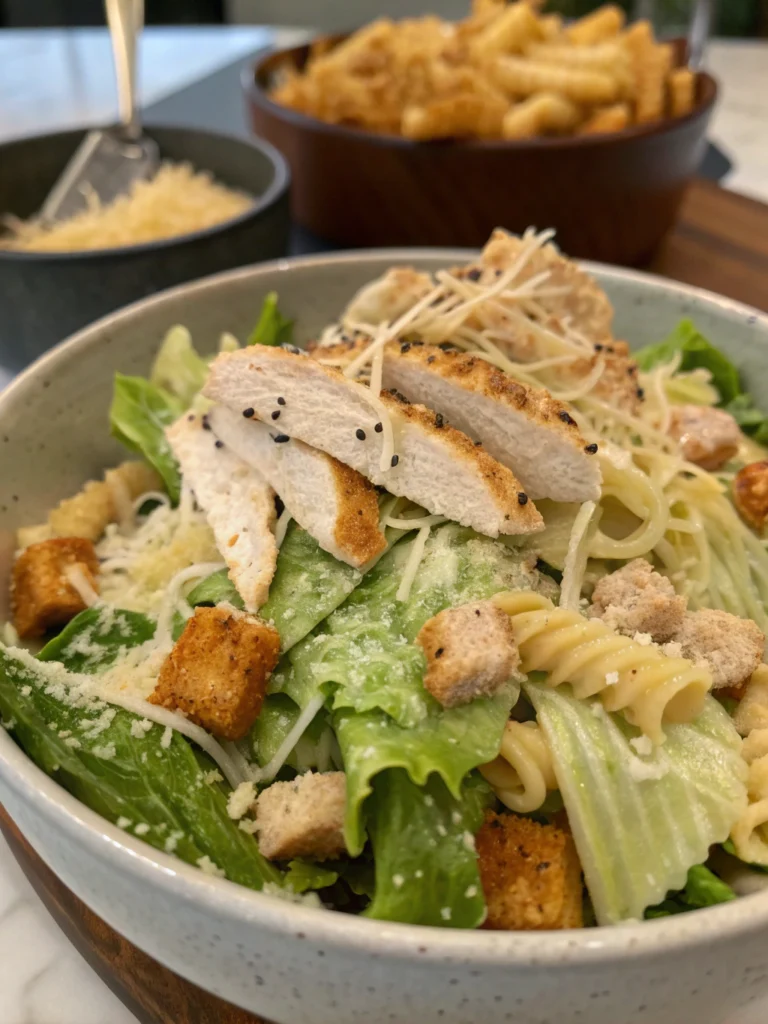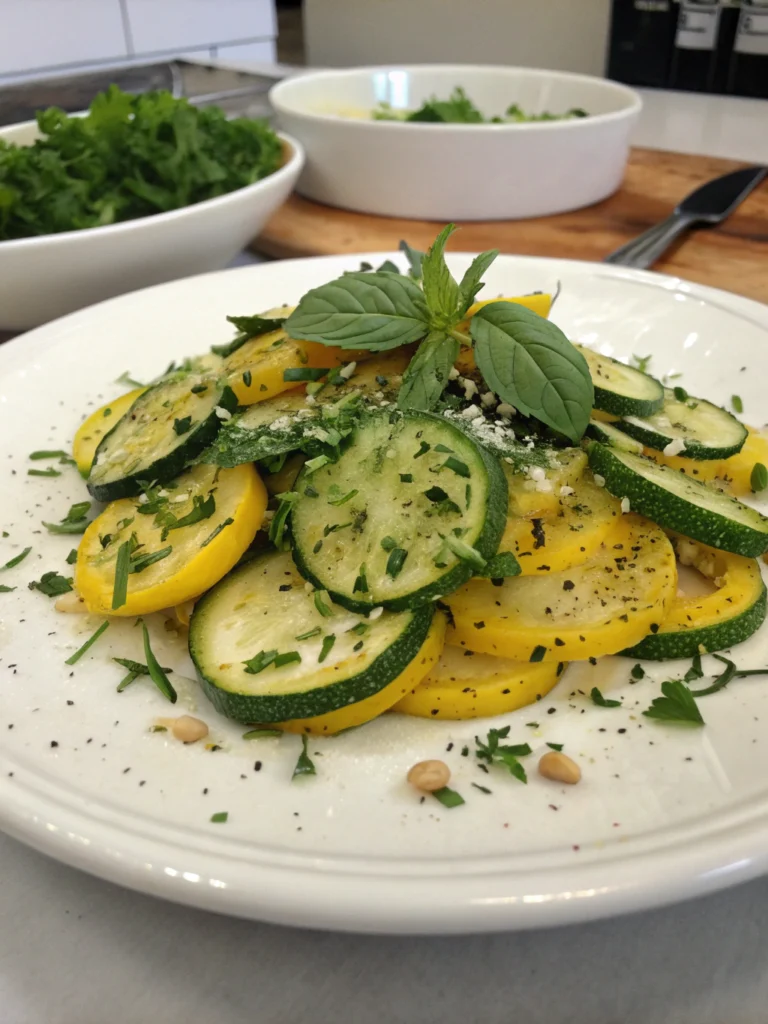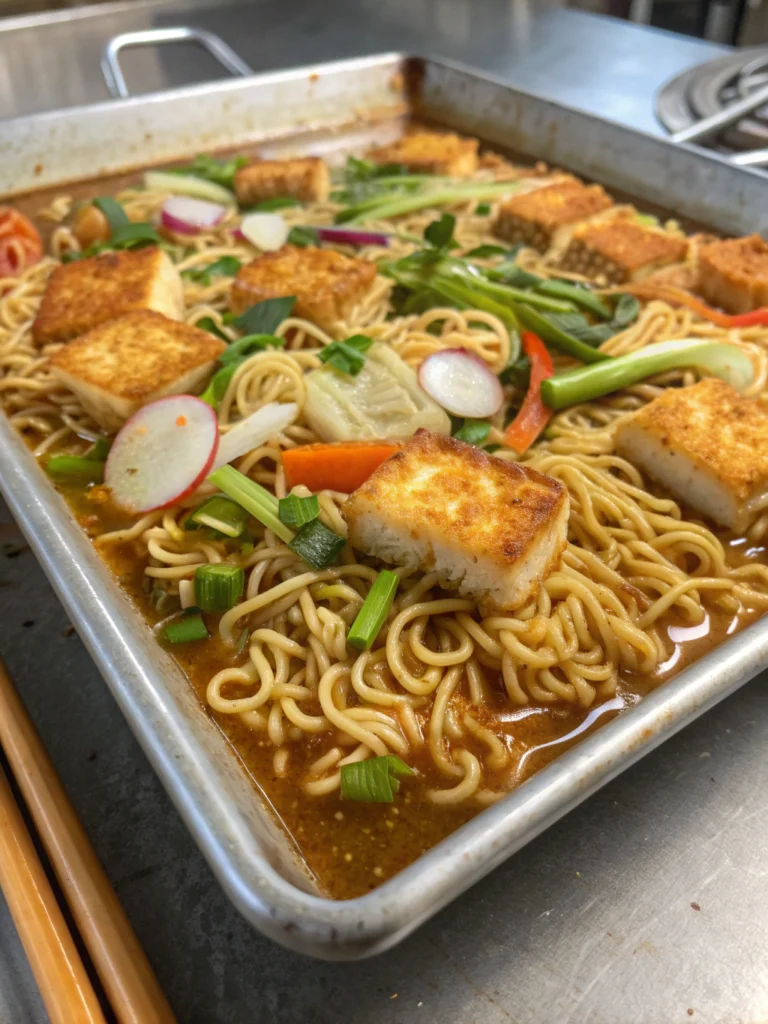Chicken Cacciatore: A Classic Italian Comfort Dish
Have you ever wondered why Chicken Cacciatore has remained a beloved Italian-American classic for generations? Is it the rich tomato sauce, the tender chicken, or the aromatic herbs that make this dish so irresistible? Perhaps it’s the beautiful simplicity that transforms humble ingredients into something extraordinary.
This rustic chicken cacciatore recipe originated from Italy, where “cacciatore” means “hunter” – suggesting it was a hearty meal prepared for hunters returning from a day’s work. Today, I’m sharing my perfected version that balances authentic flavors with modern techniques for a memorable family dinner.
Ingredients List
The beauty of Chicken Cacciatore lies in its straightforward ingredients that work together to create complex flavors. Each component adds a layer of depth to this rustic Italian dish.
- 8 bone-in, skin-on chicken thighs (about 3 pounds) – You can substitute with boneless thighs for quicker cooking or chicken breasts for a leaner option
- 1 teaspoon kosher salt, plus more to taste
- ½ teaspoon freshly ground black pepper
- 2 tablespoons olive oil
- 1 medium yellow onion, diced
- 1 red bell pepper, sliced into strips
- 1 yellow bell pepper, sliced into strips – Green peppers work well too for a slightly more bitter flavor
- 8 ounces cremini mushrooms, sliced – Portobello or white button mushrooms make excellent substitutes
- 4 garlic cloves, minced
- ½ cup dry white wine – Use chicken broth for an alcohol-free version
- 1 can (28 ounces) crushed tomatoes
- 1 tablespoon tomato paste
- 1 teaspoon dried oregano
- 1 teaspoon dried basil (or 2 tablespoons fresh, chopped)
- 2 bay leaves
- ½ teaspoon red pepper flakes (optional, for heat)
- ¼ cup fresh Italian parsley, chopped
- ¼ cup pitted kalamata olives (optional)
- 2 tablespoons capers, drained (optional)
Timing
Preparation Time: 20 minutes to chop vegetables and season chicken
Cooking Time: 50-60 minutes, which is significantly less than traditional versions that often require 90+ minutes
Total Time: 70-80 minutes from start to finish, making this an achievable weeknight dinner with a bit of planning or perfect for a relaxed weekend meal
Step-by-Step Instructions
Step 1: Prepare the Chicken
Pat the chicken thighs dry with paper towels. Season generously on both sides with salt and pepper. This crucial step ensures a flavorful crust when browning. Allow the chicken to sit at room temperature for 10-15 minutes before cooking for more even browning.
Step 2: Brown the Chicken
Heat olive oil in a large, heavy-bottomed Dutch oven or deep skillet over medium-high heat. When the oil shimmers, add chicken skin-side down and cook until golden brown, about 5-7 minutes. Flip and cook for another 3-4 minutes. Work in batches if necessary to avoid overcrowding. Transfer browned chicken to a plate.
Step 3: Sauté the Vegetables
In the same pot with the rendered chicken fat, add onions and cook until softened, about 3-4 minutes. Add bell peppers and mushrooms, cooking for another 5 minutes until they begin to soften. Stir in garlic and cook until fragrant, about 30 seconds. The fond (browned bits) at the bottom of the pan contains tremendous flavor.
Step 4: Deglaze and Build the Sauce
Pour in the white wine, scraping the bottom of the pot to release any browned bits. Let the wine reduce by half, about 2-3 minutes. Add crushed tomatoes, tomato paste, oregano, basil, bay leaves, and red pepper flakes if using. Stir to combine and bring to a gentle simmer.
Step 5: Return Chicken and Simmer
Nestle the browned chicken pieces into the sauce, skin-side up, ensuring they’re partially submerged but with skin exposed. Cover and simmer on low heat for 30-35 minutes, until chicken is completely tender and registers 165°F (74°C) on an instant-read thermometer.
Step 6: Finish the Dish
Remove bay leaves. If using, add olives and capers during the last 5 minutes of cooking. Taste and adjust seasoning with additional salt and pepper as needed. For a thicker sauce, simmer uncovered for 5-10 minutes. Sprinkle with fresh parsley before serving.
Nutritional Information
This Chicken Cacciatore recipe balances indulgence with nutrition. Each serving (approximately one chicken thigh with sauce) provides:
Calories: 385 per serving
Protein: 29g (58% of daily recommended intake)
Carbohydrates: 12g (4% of daily recommended intake)
Dietary Fiber: 3g (12% of daily recommended intake)
Sugars: 6g
Fat: 23g (35% of daily recommended intake)
Saturated Fat: 6g (30% of daily recommended intake)
Cholesterol: 142mg (47% of daily recommended intake)
Sodium: 650mg (28% of daily recommended intake)
Potassium: 820mg (23% of daily recommended intake)
Vitamin C: 75% of daily recommended intake
Vitamin A: 25% of daily recommended intake
Iron: 15% of daily recommended intake
Calcium: 6% of daily recommended intake
Healthier Alternatives for the Recipe
While traditional Chicken Cacciatore is already relatively balanced, here are some modifications to make it even healthier:
Use skinless chicken thighs or breasts to reduce fat content by approximately 30% while maintaining most of the flavor. The sauce will keep the meat moist and tender even without the skin.
Increase the vegetable content by adding diced carrots, celery, or zucchini to boost fiber and nutrients. This simple change can add 3-4g of additional fiber per serving.
Replace half the chicken with white beans or chickpeas for a higher-fiber, lower-fat version that still provides ample protein. This modification reduces saturated fat while adding plant-based protein.
For a lower-carb option, serve over cauliflower rice or zucchini noodles instead of pasta or polenta. This substitution can reduce the meal’s carbohydrate content by 30-40g per serving.
Serving Suggestions
Traditional Italian serving: Spoon Chicken Cacciatore over al dente pasta like pappardelle, fettuccine, or rigatoni. The wide noodles capture the chunky sauce perfectly.
Low-carb option: Serve atop creamy polenta or mashed cauliflower for a comforting meal that’s still light enough for weeknight dining.
Rustic presentation: Place a crusty piece of Italian bread at the bottom of each bowl, then ladle the cacciatore over it, allowing the bread to soak up the delicious sauce.
Family-style serving: Transfer the finished dish to a large, shallow serving platter, garnish with additional fresh herbs and lemon zest, and place in the center of the table for a communal dining experience.
Common Mistakes to Avoid
- Overcrowding the pan when browning chicken – This causes steaming rather than browning, resulting in pale, less flavorful meat. Work in batches for proper caramelization.
- Underseasoning – Chicken needs generous seasoning. Season at multiple stages: the chicken itself, the vegetables, and the final dish.
- Rushing the cooking process – Cacciatore develops flavor through slow simmering. The difference between a 20-minute simmer and a 35-minute simmer is remarkable in depth of flavor.
- Using low-quality tomatoes – Since tomatoes are the foundation of the sauce, use good-quality canned tomatoes. San Marzano varieties offer 20% more sweetness and less acidity.
- Skipping the browning step – Properly browned chicken contributes up to 40% of the dish’s final flavor through Maillard reaction compounds.
- Cutting into chicken too soon – Allow the finished dish to rest for 5-10 minutes before serving to redistribute juices and intensify flavors.
Storing Tips for the Recipe
Refrigeration: Chicken Cacciatore actually improves with time as flavors meld. Store in an airtight container for up to 3-4 days in the refrigerator. The flavor peaks at around 24-48 hours after cooking.
Freezing: Portion cooled cacciatore into freezer-safe containers, leaving ½-inch headspace for expansion. Freeze for up to 3 months. Thaw overnight in the refrigerator before reheating.
Reheating: Warm gently on the stovetop over medium-low heat, adding a splash of chicken broth if the sauce has thickened too much. Avoid microwave reheating which can toughen the chicken.
Make-ahead preparation: You can prepare the entire dish up to 2 days ahead and refrigerate. The flavors will actually intensify, making this perfect for entertaining or meal prep.
Conclusion
This authentic Chicken Cacciatore brings together simple ingredients to create a dish that’s greater than the sum of its parts. The combination of tender chicken, aromatic vegetables, and rich tomato sauce creates a meal that satisfies on multiple levels – comfort, nutrition, and incredible flavor.
Have you tried making this classic Italian dish? I’d love to hear your variations and family traditions in the comments below! If you enjoyed this recipe, please share it with friends and family who appreciate hearty, flavorful meals made with love. For more Italian-inspired recipes that balance tradition with modern techniques, subscribe to our newsletter!

